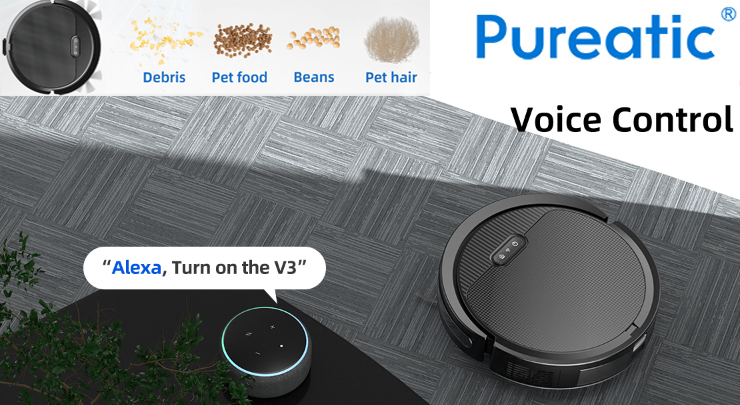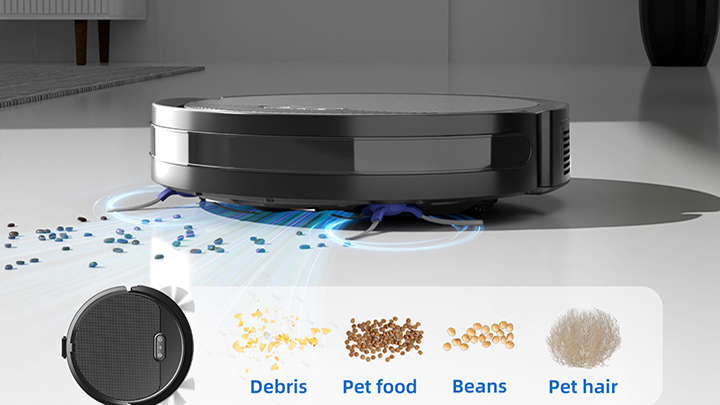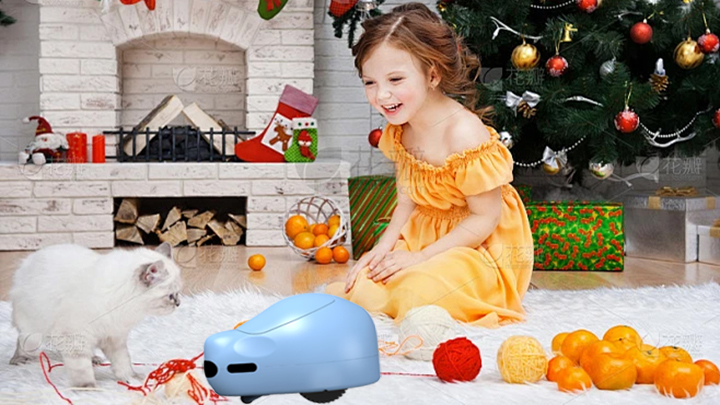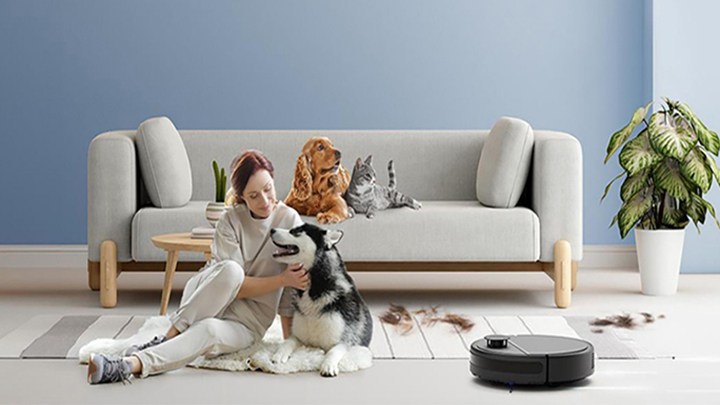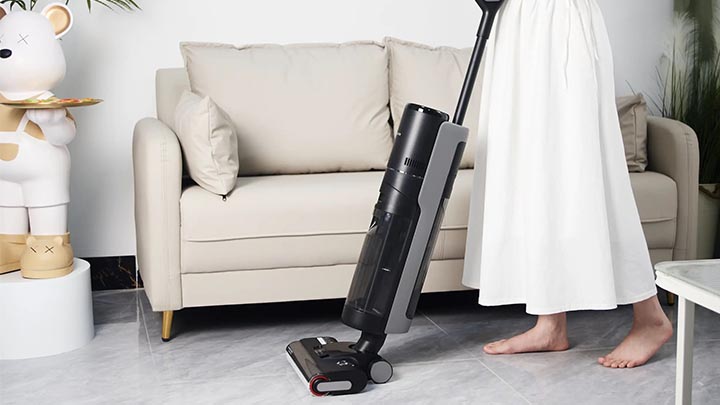What are the Main Purposes of Pet Company Robots?
The core purpose of pet interactive robots is to interact with, accompany, and guide real pets (such as cats, dogs, etc.), helping to solve problems like boredom and excess energy when pets are left alone at home, while also reducing the care pressure on their owners. Their specific uses can be divided into the following categories:1. Accompanying pets in play to alleviate loneliness and anxietyPets (especially cats and dogs) are prone to anxiety when left alone at home due to boredom, and may even exhibit behaviors like destroying furniture or urinating randomly. Pet-playing robots attract pets to chase and pounce through built-in interactive devices (such as movable cat teasers, feathers, small balls, or by simulating the movement trajectories of "prey" like mice or birds). This allows pets to burn off energy during play, reducing loneliness and destructive behaviors.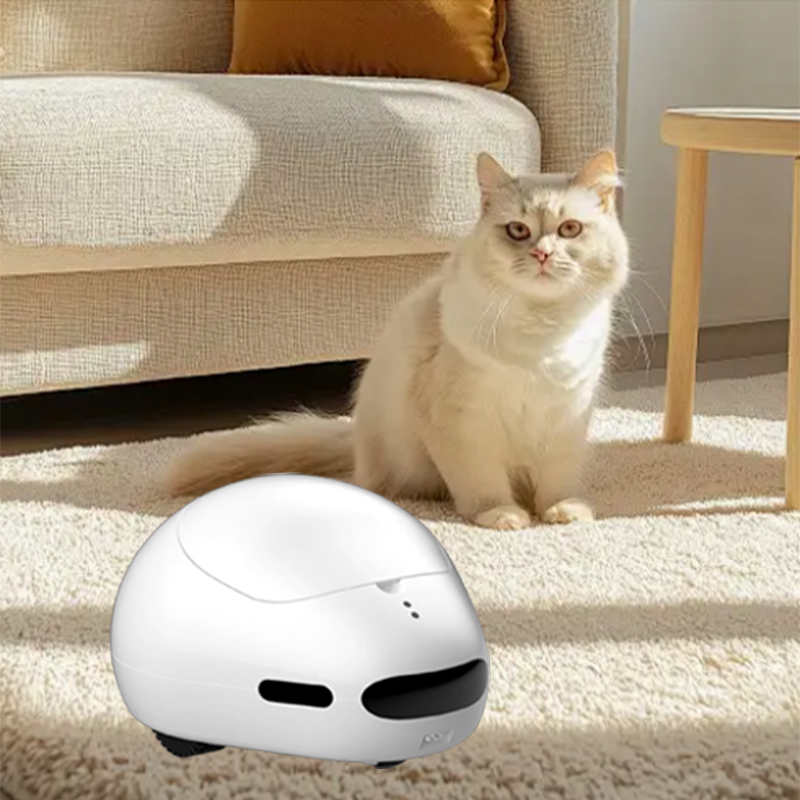 2. Promoting pet exercise to maintain a healthy stateMany pets (especially indoor cats and small dogs) are prone to obesity or health issues due to lack of exercise. Pet-playing robots can guide pets to run and jump, increasing their daily activity through regular interactions (such as timed activation and variable-speed movement). For example, some robots adjust their speed based on the pet’s activity level, ensuring pets "get moving" without overexerting themselves.
2. Promoting pet exercise to maintain a healthy stateMany pets (especially indoor cats and small dogs) are prone to obesity or health issues due to lack of exercise. Pet-playing robots can guide pets to run and jump, increasing their daily activity through regular interactions (such as timed activation and variable-speed movement). For example, some robots adjust their speed based on the pet’s activity level, ensuring pets "get moving" without overexerting themselves.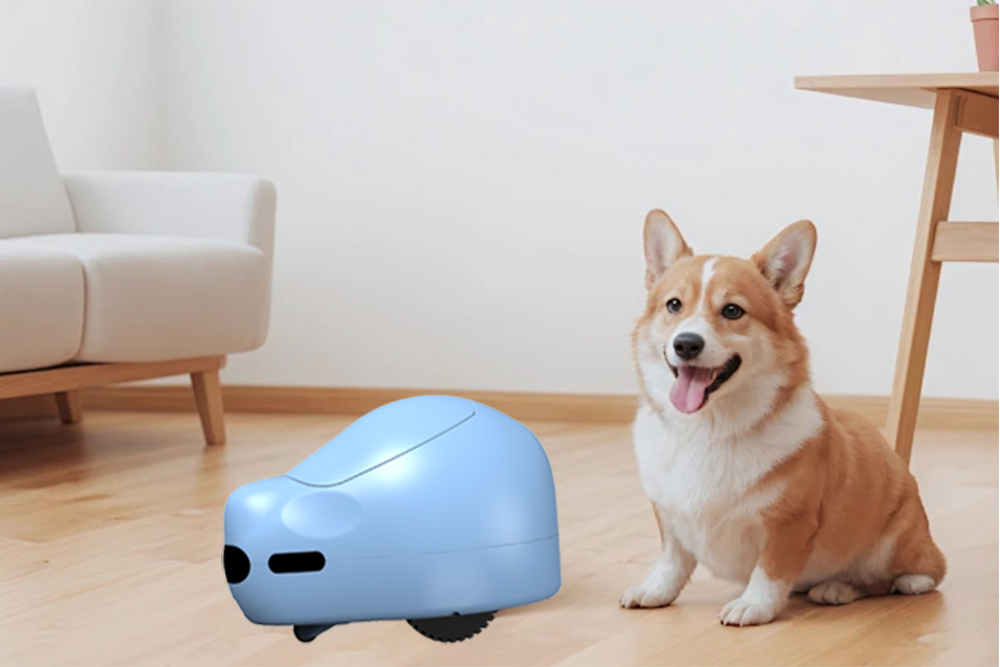 3. Enabling remote interaction to bridge the distance between owners and petsWhen owners are away, they can remotely control pet-playing robots via a mobile app (e.g., adjusting direction, activating toys, or emitting soft sounds) and observe their pets’ reactions in real time (some robots are equipped with cameras and microphones). This "remote teasing" allows owners to keep an eye on their pets at any time and helps pets feel the owner’s "presence" through interaction, easing mutual longing (for instance, when the owner works overtime, they can play with their pet for a while via the robot, reducing the pet’s waiting anxiety).4. Assisting in guiding pet behavior to reduce bad habitsSome pet-playing robots integrate behavioral guidance functions: for example, when a pet approaches "forbidden areas" like sofas or wires, the robot can drive the pet away by gently vibrating, making specific sounds, or moving to a safe area to "lure" them away. This indirectly helps correct habits like destroying furniture or chewing randomly. Additionally, when pets interact calmly, positive behaviors can be reinforced through reward mechanisms (such as dispensing snacks via linked feeders).5. Adapting to multi-pet households to balance interaction needsIn households with multiple pets, pet-playing robots can attract several pets to participate in interactions at the same time (e.g., a rolling small ball can make multiple cats chase it together). This avoids conflicts between pets over competing for the owner’s attention and also reduces the pressure on owners to accompany multiple pets simultaneously.In short, the core of pet-playing robots is to act as "playmates" for pets and "assistants" for owners. They not only meet pets’ needs for exercise and social interaction but also help owners solve the pain point of "not having time to accompany pets," making pet ownership easier and pets happier and healthier.
3. Enabling remote interaction to bridge the distance between owners and petsWhen owners are away, they can remotely control pet-playing robots via a mobile app (e.g., adjusting direction, activating toys, or emitting soft sounds) and observe their pets’ reactions in real time (some robots are equipped with cameras and microphones). This "remote teasing" allows owners to keep an eye on their pets at any time and helps pets feel the owner’s "presence" through interaction, easing mutual longing (for instance, when the owner works overtime, they can play with their pet for a while via the robot, reducing the pet’s waiting anxiety).4. Assisting in guiding pet behavior to reduce bad habitsSome pet-playing robots integrate behavioral guidance functions: for example, when a pet approaches "forbidden areas" like sofas or wires, the robot can drive the pet away by gently vibrating, making specific sounds, or moving to a safe area to "lure" them away. This indirectly helps correct habits like destroying furniture or chewing randomly. Additionally, when pets interact calmly, positive behaviors can be reinforced through reward mechanisms (such as dispensing snacks via linked feeders).5. Adapting to multi-pet households to balance interaction needsIn households with multiple pets, pet-playing robots can attract several pets to participate in interactions at the same time (e.g., a rolling small ball can make multiple cats chase it together). This avoids conflicts between pets over competing for the owner’s attention and also reduces the pressure on owners to accompany multiple pets simultaneously.In short, the core of pet-playing robots is to act as "playmates" for pets and "assistants" for owners. They not only meet pets’ needs for exercise and social interaction but also help owners solve the pain point of "not having time to accompany pets," making pet ownership easier and pets happier and healthier.

